3653 results in ebooks in fluid mechanics
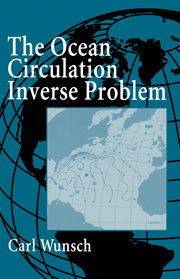
The Ocean Circulation Inverse Problem
-
- Published online:
- 07 May 2010
- Print publication:
- 13 June 1996
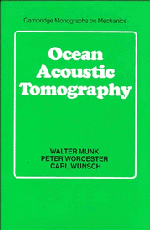
Ocean Acoustic Tomography
-
- Published online:
- 04 May 2010
- Print publication:
- 30 June 1995
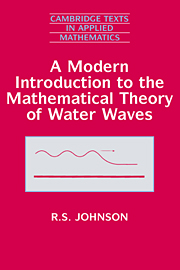
A Modern Introduction to the Mathematical Theory of Water Waves
-
- Published online:
- 04 May 2010
- Print publication:
- 28 October 1997
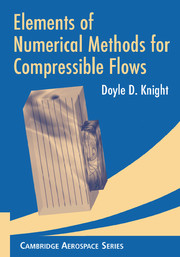
Elements of Numerical Methods for Compressible Flows
-
- Published online:
- 30 March 2010
- Print publication:
- 14 August 2006
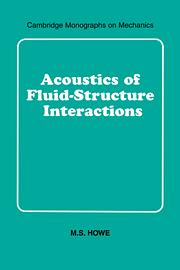
Acoustics of Fluid-Structure Interactions
-
- Published online:
- 22 March 2010
- Print publication:
- 13 August 1998
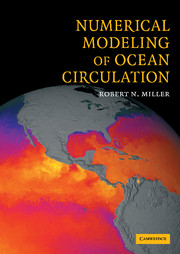
Numerical Modeling of Ocean Circulation
-
- Published online:
- 19 February 2010
- Print publication:
- 18 January 2007
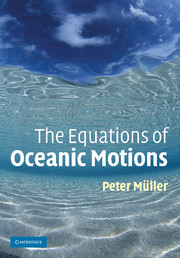
The Equations of Oceanic Motions
-
- Published online:
- 03 February 2010
- Print publication:
- 28 September 2006
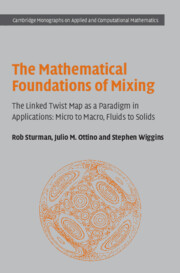
The Mathematical Foundations of Mixing
- The Linked Twist Map as a Paradigm in Applications: Micro to Macro, Fluids to Solids
-
- Published online:
- 03 February 2010
- Print publication:
- 21 September 2006
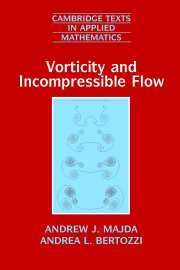
Vorticity and Incompressible Flow
-
- Published online:
- 03 February 2010
- Print publication:
- 26 November 2001
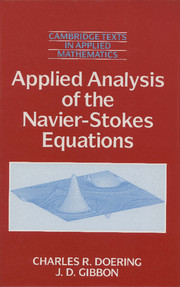
Applied Analysis of the Navier-Stokes Equations
-
- Published online:
- 02 February 2010
- Print publication:
- 28 April 1995
8 - The equations of atmospheric turbulence
- from Part II - Turbulence in the atmospheric boundary layer
-
- Book:
- Turbulence in the Atmosphere
- Published online:
- 11 April 2011
- Print publication:
- 28 January 2010, pp 175-192
-
- Chapter
- Export citation
10 - The atmospheric surface layer
- from Part II - Turbulence in the atmospheric boundary layer
-
- Book:
- Turbulence in the Atmosphere
- Published online:
- 11 April 2011
- Print publication:
- 28 January 2010, pp 215-240
-
- Chapter
- Export citation
Part II - Turbulence in the atmospheric boundary layer
-
- Book:
- Turbulence in the Atmosphere
- Published online:
- 11 April 2011
- Print publication:
- 28 January 2010, pp 173-174
-
- Chapter
- Export citation
14 - Isotropic tensors
- from Part III - Statistical representation of turbulence
-
- Book:
- Turbulence in the Atmosphere
- Published online:
- 11 April 2011
- Print publication:
- 28 January 2010, pp 313-330
-
- Chapter
- Export citation
Frontmatter
-
- Book:
- Turbulence in the Atmosphere
- Published online:
- 11 April 2011
- Print publication:
- 28 January 2010, pp i-iv
-
- Chapter
- Export citation
11 - The convective boundary layer
- from Part II - Turbulence in the atmospheric boundary layer
-
- Book:
- Turbulence in the Atmosphere
- Published online:
- 11 April 2011
- Print publication:
- 28 January 2010, pp 241-266
-
- Chapter
- Export citation
Preface
-
- Book:
- Turbulence in the Atmosphere
- Published online:
- 11 April 2011
- Print publication:
- 28 January 2010, pp ix-xii
-
- Chapter
- Export citation
3 - Equations for averaged variables
- from Part I - A grammar of turbulence
-
- Book:
- Turbulence in the Atmosphere
- Published online:
- 11 April 2011
- Print publication:
- 28 January 2010, pp 55-74
-
- Chapter
- Export citation
6 - Large-eddy dynamics, the energy cascade, and large-eddy simulation
- from Part I - A grammar of turbulence
-
- Book:
- Turbulence in the Atmosphere
- Published online:
- 11 April 2011
- Print publication:
- 28 January 2010, pp 115-144
-
- Chapter
- Export citation
Index
-
- Book:
- Turbulence in the Atmosphere
- Published online:
- 11 April 2011
- Print publication:
- 28 January 2010, pp 387-393
-
- Chapter
- Export citation
